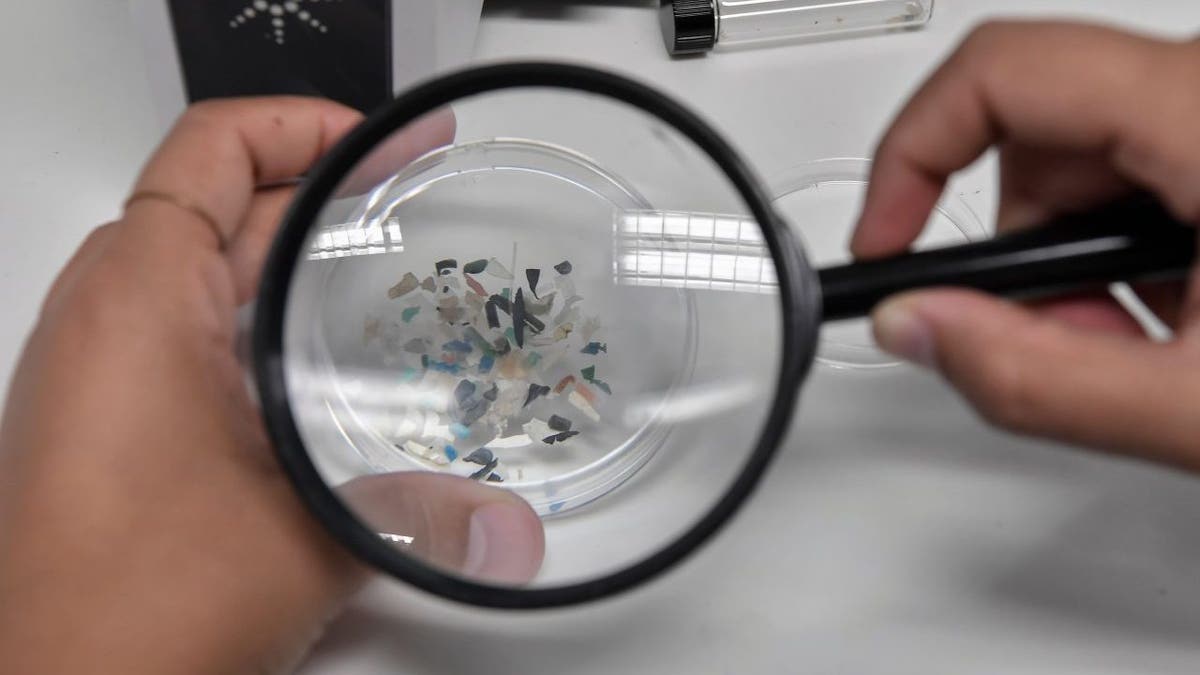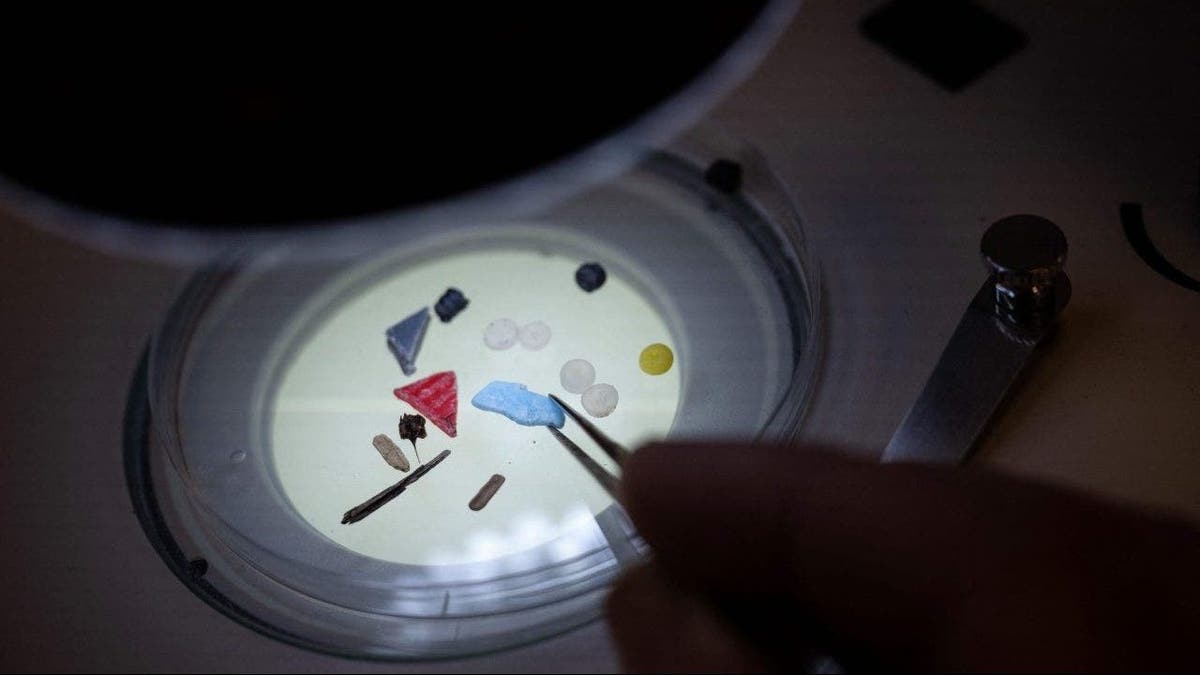
A new study finds that the overwhelming majority of protein foods such as meat and fish are contaminated with microplastics.
The comprehensive study, conducted by researchers at the nonprofit Ocean Conservancy, found that approximately 88% of protein samples tested contained microplastic particles.
“Highly processed products contained the most microplastics per gram,” the study said in its findings.
SPAIN FACES ECOLOGICAL CRISIS AS MILLIONS OF PLASTIC PELLETS WASH ASHORE FROM SHIP SPILL
“Microplastic contamination did not differ between brands or store types.”

A biologist looks at microplastics found in sea species at the Hellenic Centre for Marine Research near Athens. (Louisa Gouliamaki/AFP via Getty Images)
The samples were differentiated into 16 types, such as beef, chicken, seafood, pork, tofu and plant-based food products.
Microplastic particles were discovered across all 16 sample types.
“Maximum U.S. adult exposure from these proteins is ∼3.8 million microplastics/year,” the study reports. “Mean U.S. adult exposure from consuming these proteins is >11,000 microplastics/year.”
PLASTIC POLLUTION IN WORLDS’ OCEANS COULD HAVE $2.5 TRILLION IMPACT, STUDY SAYS

Variety of wild-caught and farm-raised seafood, organic chicken and marinated meats are displayed at Diablo Foods in Lafayette, California. (Smith Collection/Gado/Getty Images)
Microplastics are pieces of plastic that measure less than five millimeters. Nanoplastics are even smaller, measuring less than 1 micrometer.
Among the tested samples, approximately 44% of the microplastics found were in the form of fibers.
An additional third of the particles were in the form of plastic fragments.

Professor Richard Thompson, director of the Marine Institute of Plymouth, analyzes microplastics in a laboratory at the University of Plymouth, southwestern England. (Ben Stansall/AFP via Getty Images)
The study, performed in conjunction with the University of Toronto, notes that due to limitations on their detection methods, the amount of particles could be even higher.
CLICK HERE TO GET THE FOX NEWS APP
“While our study significantly advances the understanding of MP prevalence in the human food system, there are some inherent limitations to our findings,” the study reports.
CLICK HERE TO SIGN UP FOR OUR HEALTH NEWSLETTER
“Due to the limit of detection associated with counting and identifying suspected MP particles under a microscope, our results pertain only to microplastics 45 μm and larger. This means that nanoplastics (NPs) and any MPs <45 μm are not included in our results.”
For more Health articles, visit www.foxnews.com/health

 Latest Breaking News Online News Portal
Latest Breaking News Online News Portal




